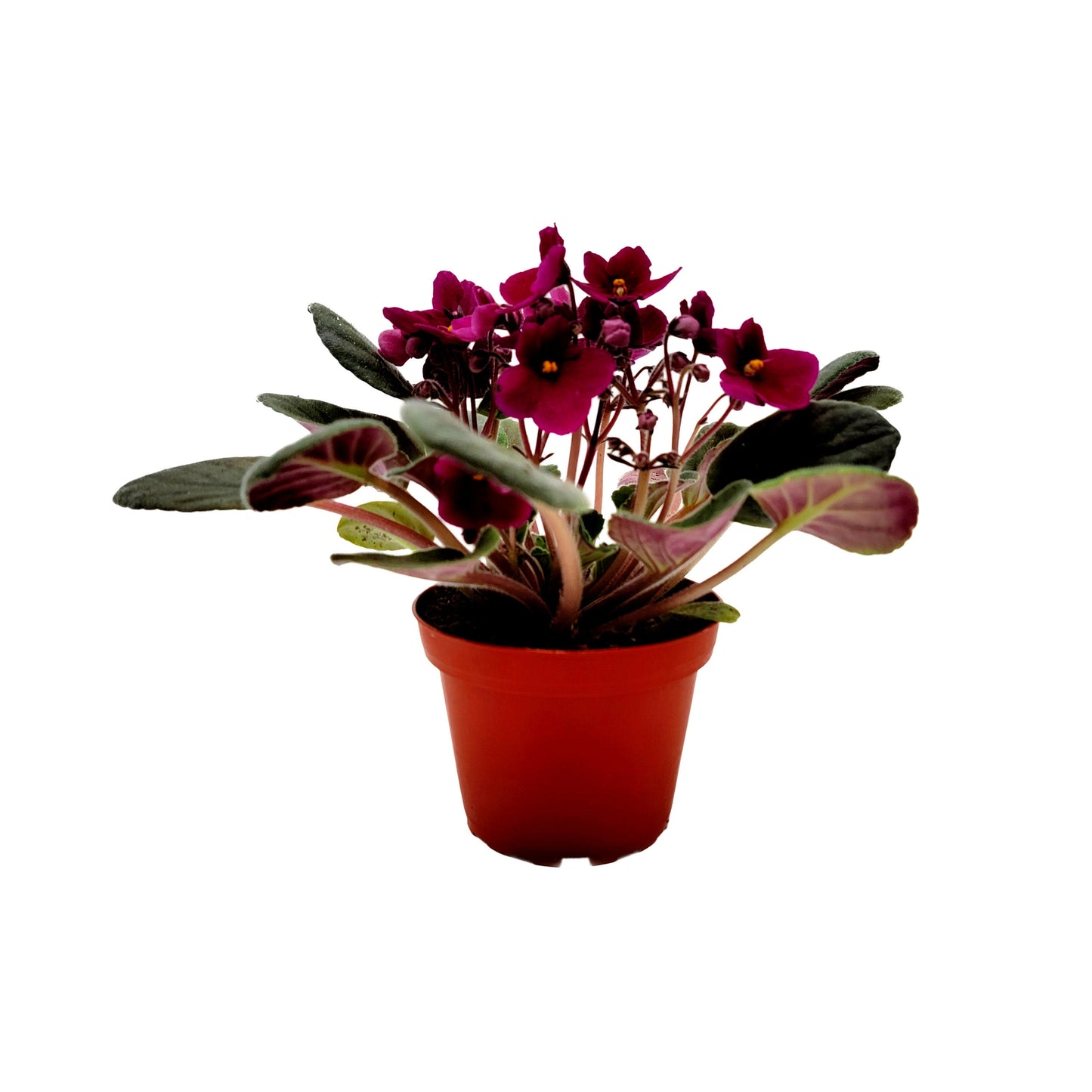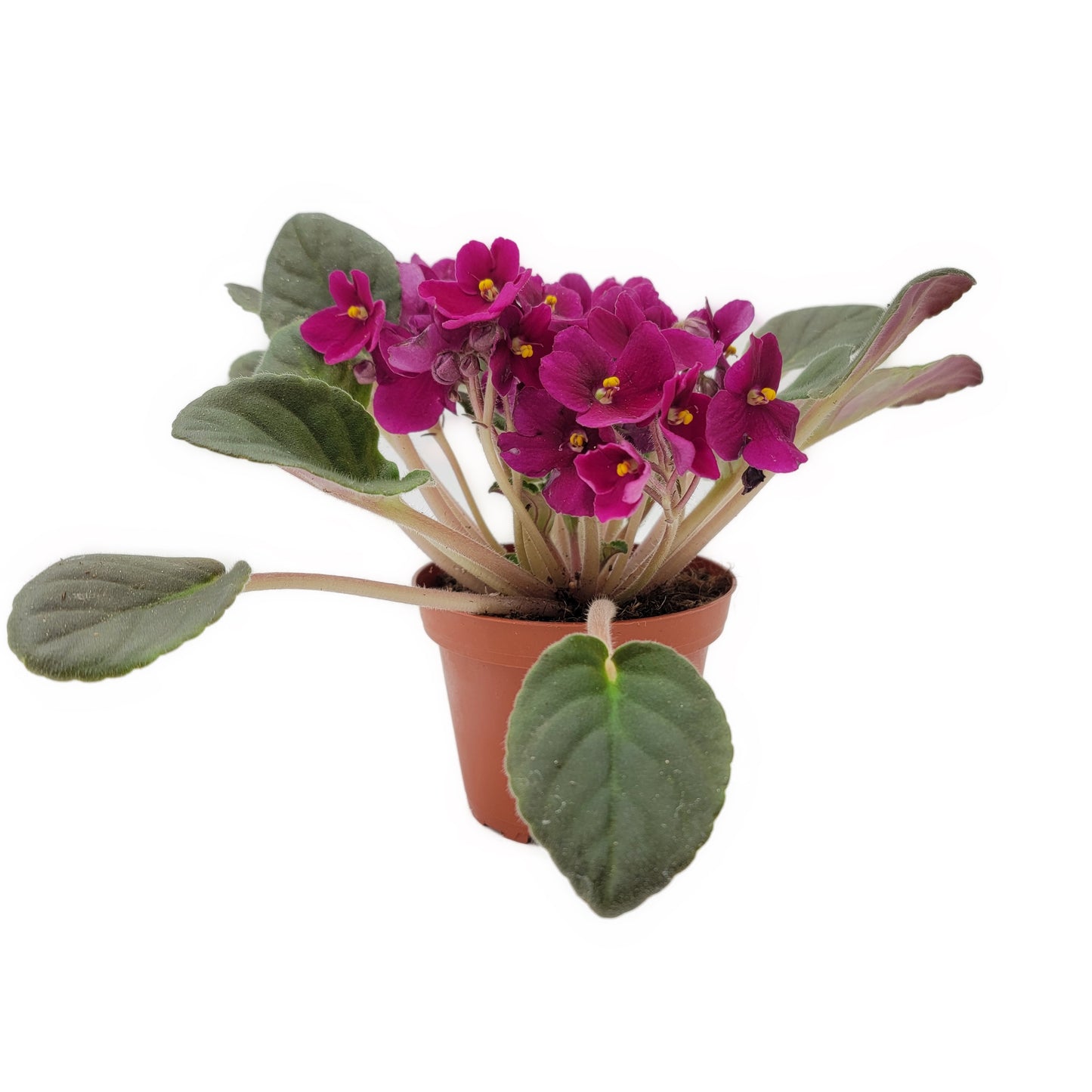Wonderland Flora
4” African Violet with Burgundy Red Flowers (Burgundy on the red side, NOT red), Saintpaulia ionantha – Houseplants, Flowering Plants + FREE HEATPACK
4” African Violet with Burgundy Red Flowers (Burgundy on the red side, NOT red), Saintpaulia ionantha – Houseplants, Flowering Plants + FREE HEATPACK
Couldn't load pickup availability
What you will get:
You will receive African violet plants with burgundy red flowers growing in a 4" pot. PLEASE NOTE: THE FLOWERS ARE BURGUNDY ON THE RED SIDE, NOT RED).
Description
Features and fun points
African Violet (Saintpaulia ionantha) known also as Cape Marigold is an ideal plant for the indoor home garden and is grown for their colorful flowers of many varieties. When grown together they make an outstanding display. The plants can be enjoyed throughout the year as they bloom continuously, even in winter.
There are lots of modern hybrid varieties of African Violet. They all trace their ancestry to the plants first discovered in the Eastern Arc Mountains of Tanzania and Kenya. Interestingly, Although African Violets propagated by leaf cuttings will not produce plantlets with similar flowers but may not be identical to those produced by the original plant. These are called chimeric varieties. There are lots of chimeric varieties of African Violet.
African Violets are great houseplants that require low maintenance, do very well in the home or the office, and are pet friendly. Place them throughout the house to enjoy beautiful colors of flowers and velvety texture of the leaves all year round.
Care tips
Soil – Pot African Violet into the right soil for the easiest care. Special mixes are available, or you can make your own from peat moss, vermiculite, and perlite.
Light – Light affects flowering of African Violet. Bright to medium intensity promotes bloom. Moreover, African violet plants with dark green foliage need more light than those with pale/medium green foliage. To keep flowers from reaching for the light, rotate pots regularly. If light cannot be maintained for eight hours, consider using fluorescent lights.
Water – Proper watering is probably the most important for growing African violet plants. Use room temperature water. Water at the base and never splash the foliage with water; just a drop can cause foliar spots and damage. Water when the soil feels dry to the touch. Never let African Violets stand in water or completely dry out.
Temperature – African Violets prefer the same temperatures most people find comfortable: between 70-80°F during the day, and around 65–70°F at night.
Feeding – Fertilize African Violets with special African Violet food, or a food with a higher phosphorus number (the middle number in the NPK fertilizer ratio, such as 15-30-15). Fertilizer can be mixed at one-quarter strength and used at every watering. Not enough fertilizer will cause reduced flowering and paler leaf color.
Special care – Do not allow extra crowns (suckers) to develop. African Violets should be grown single-crowned. Most African Violets look best with no more than 5 rows of leaves. To encourage the development of more flowers simply pinch blooms when they are spent.
Share













